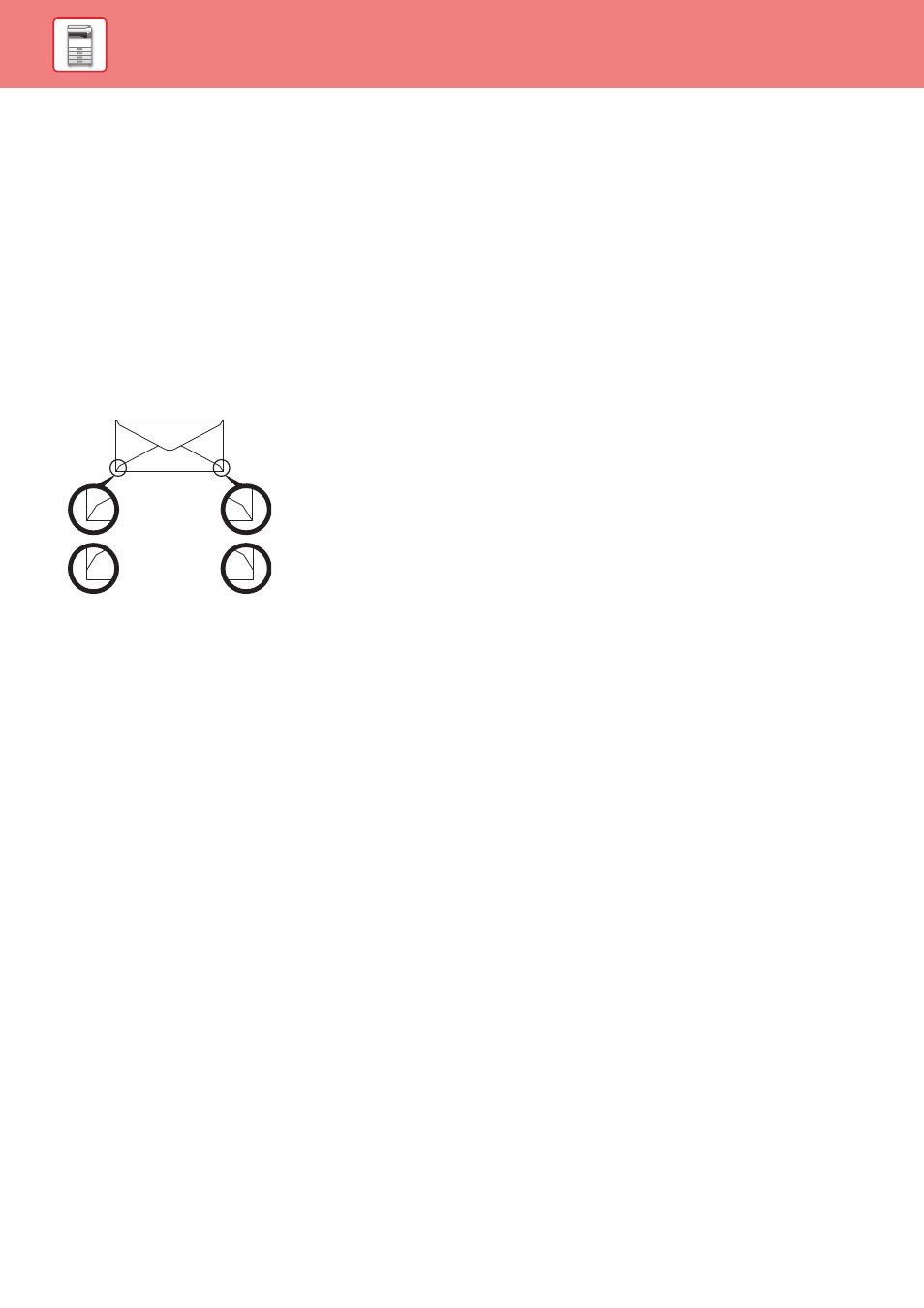Important points when using envelopes – Sharp MX-6070N User Manual
Page 79

1-76
BEFORE USING THE MACHINE►LOADING PAPER
Important points when using envelopes
• Do not print on both sides of an envelope. This may result in misfeeds or poor print quality.
• Restrictions apply to some types of envelopes. For more information, consult a qualified service technician.
• Some operating environments may cause creasing, smudging, misfeeds, poor toner fusing, or machine failure.
• Fold the flap of the envelope and make a sharp crease at the fold. A misfeed may occur if the flap is up.
• Do not use the following envelopes:
• Those with a metal piece, a plastic hook or a ribbon hook
• Those with a string for closing
• Those with a window
• Those with a lining
• Those with an uneven surface, finished with titling or emboss
• Duplex envelopes or those with adhesive or other synthetic material for sealing
• Hand-made envelopes
• Those containing air inside
• Those damaged with a crease, fold mark or tear
• Envelopes with the corner gluing position on the back not aligned with the corner edge should not be used as it may
cause creasing.
• Print quality is not guaranteed in the area 10 mm (13/32") around the edges of the envelope.
• Print quality is not guaranteed on parts of envelopes where there is a large step-like change of thickness, such as on
four-layer parts or parts less than three layers.
• Print quality is not guaranteed on envelopes having peel off flaps for sealing the envelopes.
Important points when using embossed paper/label sheets
• The effect of asperity surfaces of embossed paper may affect the print quality depending on the type of embossed
paper.
For more information, consult the dealer or nearest authorised service representative.
• Some labels may have to be loaded into the bypass tray in the specified orientation. Follow such instructions.
If a form is already printed on the labels, and the print images and the preprinted form do not line up, adjust the
application or printer driver settings to rotate the print images.
• Do not use the following types of label sheets.
• Label sheets without an adhesive copy or label copy
• Label sheets with adhesive exposed
• Label sheets with a specified feeding direction that is not supported by the machine
• A label sheet that has already been fed or has some labels removed
• Label sheets consisting of multiple sheets
• Label sheets that do not support laser printing
• Label sheets that cannot withstand heat
• Label sheets that have perforations in the backing paper
• Label sheets with slits in the backing paper
• Non-standard label sheets
• Label sheets with adhesive that has deteriorated due to prolonged storage or otherwise
• Label sheets with cutouts that expose the backing paper
• Curled or otherwise deformed label sheets
• Torn or creased label sheets
Can be used
Cannot be used
